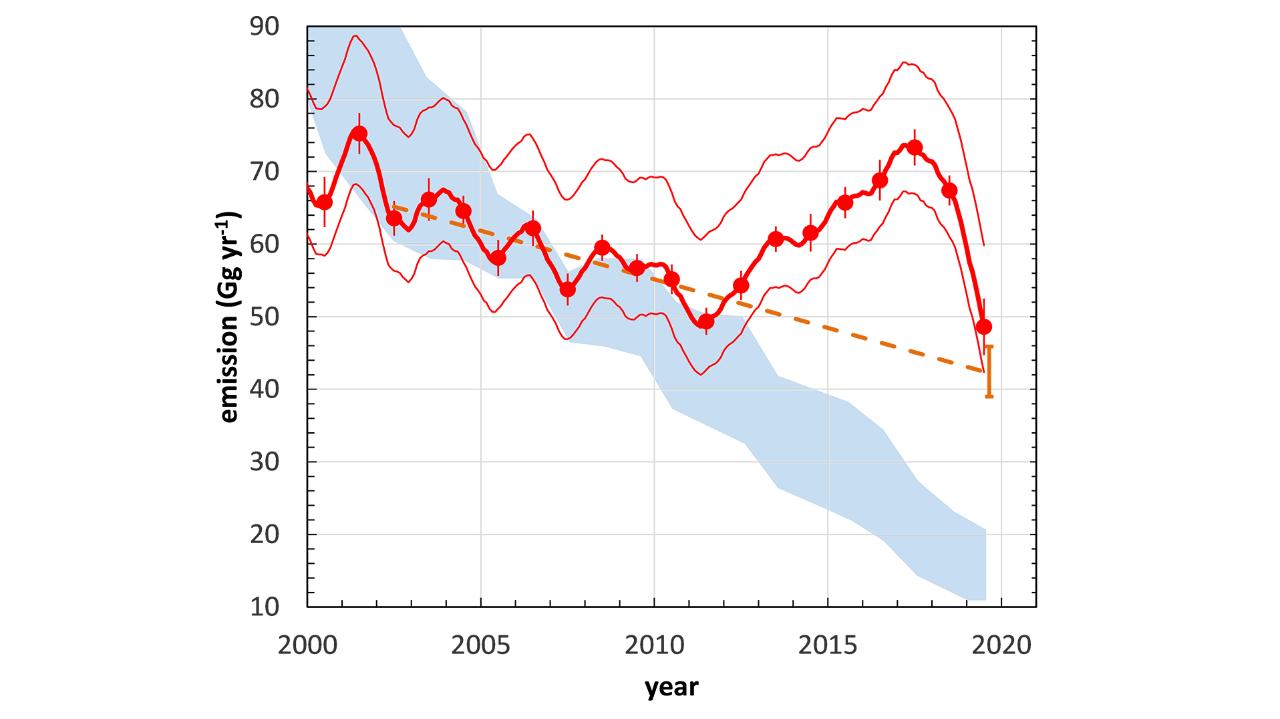Stephen Montzka
NOAA Research Chemist for NOAA ESRL Global Monitoring Laboratory
- Ph.D., University of Colorado, Boulder, 1988
Research Interests
I am currently a Research Chemist at NOAA’s Global Monitoring Laboratory in Boulder Colorado. My primary research interests revolve around understanding changes in the chemical composition of the global atmosphere, particularly related to ozone-depleting substances, greenhouse gases, and hazardous air pollutants; identifying the role of natural and human-related influences on atmospheric composition; diagnosing variability in the atmosphere's oxidizing capacity, in terrestrial photosynthesis, and in stratosphere-troposphere exchange; quantifying fluxes of trace gases from the United States; and effectively communicating scientific results to interested parties nationally and internationally, including the public and policymakers.
Current Research
From air samples collected on an ongoing basis from surface sites and aircraft, and that are analyzed in our Boulder labs to determine concentrations of over 40 different trace gases, insights into science- and policy-relevant questions can be gleaned. Data obtained from the analysis of these samples via high-precision gas chromatography coupled to mass spectrometry have been used recently for identifying an increase in emissions of CFC-11, an ozone-depleting substance banned by the Montreal Protocol in 2010. This renewed emission increase persisted through 2018 but now appears to be on the decline. The data we provide from this program and from other short-term large-scale projects (e.g.,NASA’s Atmospheric Tomography Experiment) have also been used in recent studies for investigating the influence of increasing concentrations of short-lived gases not controlled by the Montreal Protocol on the ozone layer (e.g., dichloromethane), 3) diagnosing the global and relative hemispheric concentration of the hydroxyl radical over time and estimating the impact of those changes on the global budget of methane, and 4) improving our understanding of regional and global budgets of carbonyl sulfide, which may enhance our understanding of CO2 uptake by terrestrial photosynthesis.
In addition to studying atmospheric changes on global scales, the U.S.-centric sampling program managed by the Carbon Cycle Group and NOAA has allowed investigations into national-scale issues. Data obtained from this regional network have been used to quantify national-scale emissions of ozone-depleting substances and non-CO2 greenhouse gases that show how the Montreal Protocol has substantially added to the reduction in U.S. total greenhouse gas emissions in recent years. These data have also been used to improve the quantification and attribution of atmospheric impacts associated with oil and gas exploration and development (including hydraulic fracturing) and enhance our understanding of continental-scale sources and sinks of carbonyl sulfide, a trace gas whose concentration changes over land to appear closely linked to terrestrial photosynthesis.
Research Categories
Atmosphere, Chemistry, Climate and WeatherResearch Images
Honors and Awards
to
Invalid date -Sponsors
-
Invalid dateP.I.(s)
About CECA
CECA connects and creates a supportive environment for graduate students and postdocs who come from various academic units to do research in CIRES.
